Howard Carter AI Hologram
As my eyes grew accustomed to the light, details of the room within emerged slowly from the mist, strange animals, statues, and gold — everywhere the glint of gold… When Lord Carnarvon, unable to stand the suspense any longer, inquired anxiously, “Can you see anything?” it was all I could do to get out the words, “Yes, wonderful things.”
Howard Carter, British Archaeologist and Egyptologist
Reliving the Discovery of the Tomb of Tutankhamun
Few archaeological finds have generated such lasting fascination as the unsealing of Tutankhamun’s tomb in 1922. British archaeologist Howard Carter, after a decade of searching in the Valley of the Kings, uncovered chambers that had not been entered for over 3,000 years. The objects inside were remarkably well-preserved, representing a complete royal burial untouched for millennia and shedding light on ancient Egyptian beliefs about death, power, and the afterlife.
Howard Carter himself became as legendary as the boy king whose resting place he revealed to the world. His meticulous approach, careful documentation, and refusal to abandon the search even after years of disappointment set him apart from many of his contemporaries. The discovery elevated him into the public eye and established a model for archaeological practice that balances patience with precision.
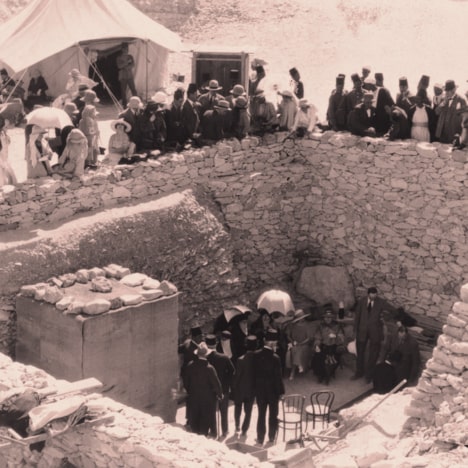
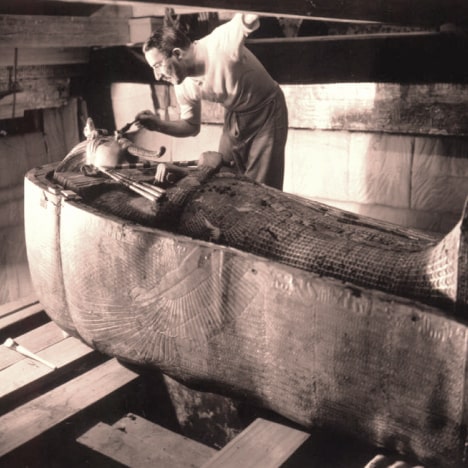
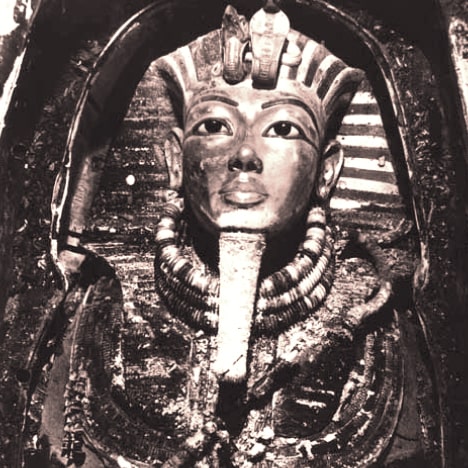
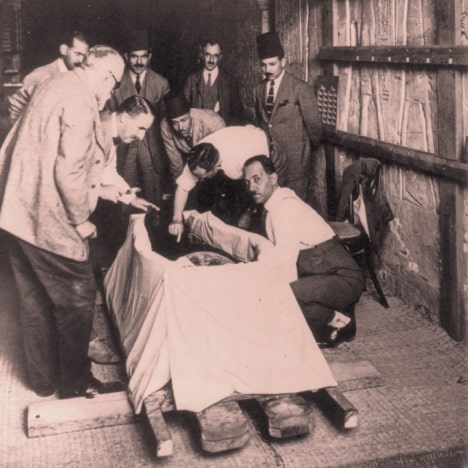
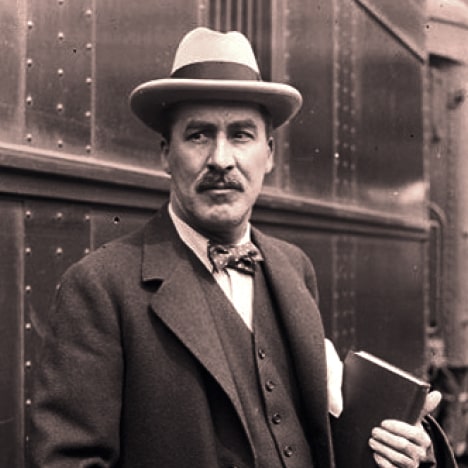
The Elliott Museum in Stuart, Florida, recognized the chance to present Carter as more than a historical name on a plaque. Known for its forward-looking approach to curation, the museum partnered with RAVATAR to create an immersive experience that would allow visitors not only to learn about Carter but to meet him face to face.
Elliott Museum:
Treasure Coast’s Center of History & Innovation
The Elliott Museum stands on Hutchinson Island in Stuart, Florida (USA), a coastal city where history, art, and community intersect. Operated by the Historical Society of Martin County, it has long taken on the role of preserving the heritage of the Treasure Coast and interpreting it in ways that speak to new generations, guided by a core idea: history should be experienced, not just observed.
Inside its galleries, visitors encounter a mix of transportation history, American art, and special exhibitions that rotate through themes well beyond the Treasure Coast. Among its recent shows is The Return of King Tut, an exhibition of Egyptian artifacts created in collaboration with the Egyptian Art Center in Cairo. By bringing ancient Egypt into its halls, the museum stretched its scope from regional memory to one of the world’s most enduring civilizations.
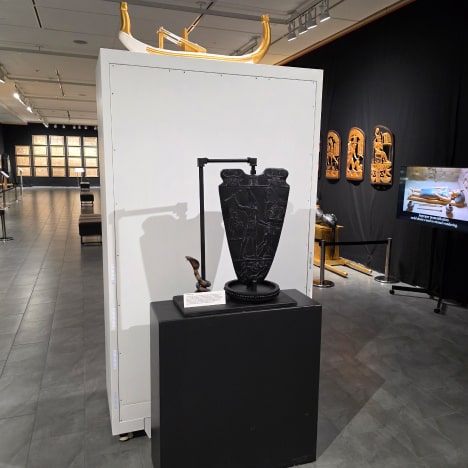
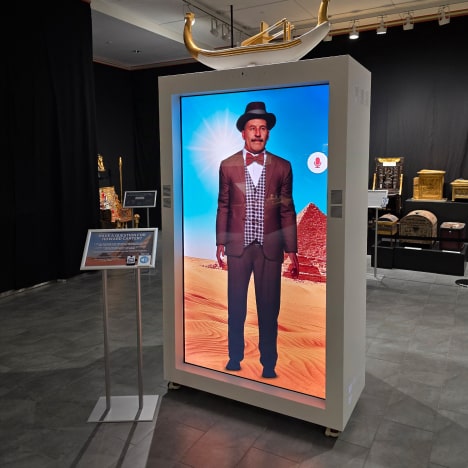
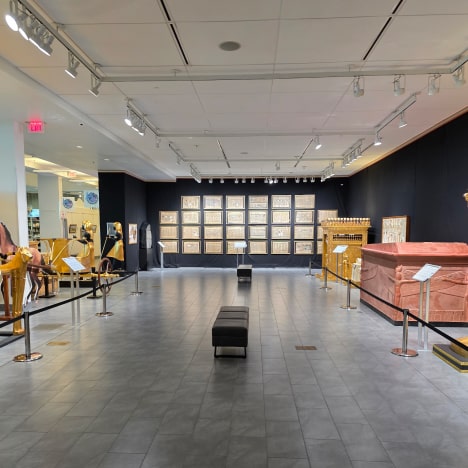
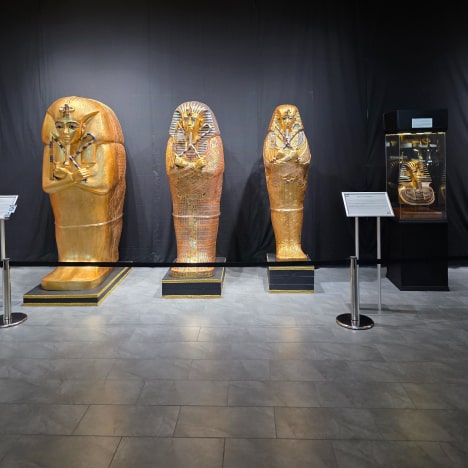
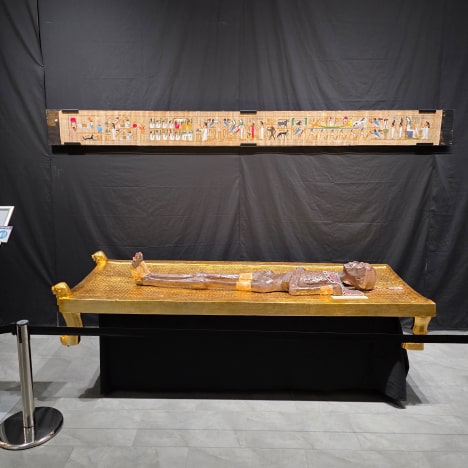
Against this backdrop, the arrival of Howard Carter as a holographic presence fit seamlessly. The museum provided the stage for his return, placing the archaeologist not behind glass but within reach, where he could speak, gesture, and guide. It transformed a familiar exhibition hall into the setting where history’s landmark discovery comes alive.
Holographic AI Avatar of Howard Carter in the World of King Tut
Howard Carter’s presence at the Elliott Museum was recreated through a holographic AI avatar, projected in the holobox. During the exhibition, visitors meet the archaeologist in person, able to ask questions and hear him recount the long years of excavation in the Valley of the Kings.
Day after day, Carter shares his story with new audiences. He describes the moment he first looked into Tutankhamun’s tomb, explains the painstaking techniques of archaeology, and responds to spontaneous curiosities about ancient Egypt. In these naturally flowing exchanges, the gallery turns into a place where history itself seems to answer back.
To honor one of archaeology’s most iconic figures, RAVATAR went beyond simple animation, reconstructing Howard Carter’s likeness with clarity drawn from the archives. His face was modeled after historic photographs, bringing back the familiar moustache and the distinctive look captured in excavation portraits. In a light suit with waistcoat and tie, he stands as if stepping out of the world of 1922.
Yet authenticity runs deeper than appearance. The avatar’s knowledge base was shaped by Carter’s diaries, field notes, and contemporary records, so that his own words and reflections now guide the way he speaks. What appears before visitors is not just a figure who looks the part but an AI-powered presence marked by the determination and unrelenting curiosity that once made Howard Carter more than a name in archaeology.
As a result, the real-time AI hologram introduces Carter not as an artifact but as a voice carried forward into the present. In the museum hall, he remains accessible, articulate, and firmly rooted in his own time while addressing ours. What might have remained a distant story becomes an encounter that is vivid, immediate, and deeply human.
Leadership Insight
“RAVATAR is a bright spot in a confusing, competitive and rapidly evolving field of technology. Their holographic recreation of Howard Carter at the Elliott Museum gave new life and real depth to a hundred-year-old story. The whole partnership has been a consistently professional and creatively rewarding experience.”
— Rob Steele, President & CEO of Elliott Museum
Bring History to Life
with Full-Body AI Avatars